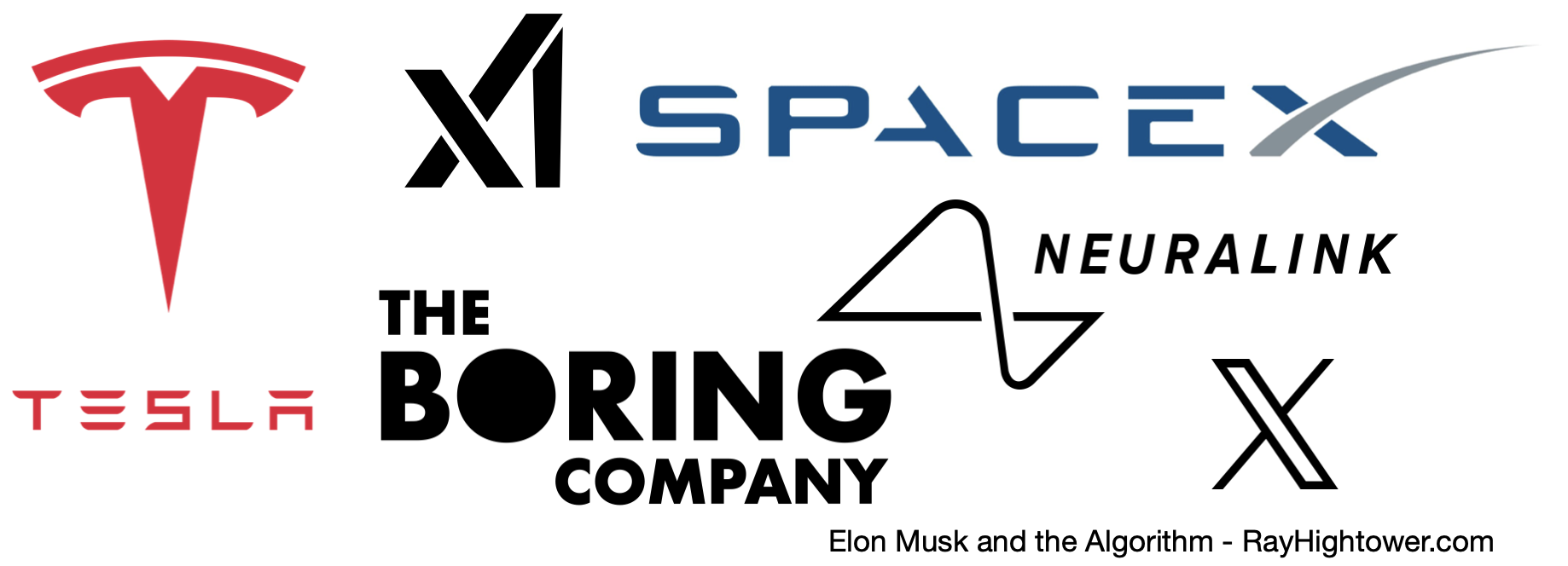Elon Musk and the Algorithm
28 Sep 2023The only rules are the ones dictated by the laws of physics. Everything else is a recommendation.
-Elon Musk
Walter Isaacson has done a thorough job of documenting the business adventures of Elon Musk in his 2023 biography.
Throughout the book, Isaacson refers to The Algorithm, a five-point checklist that Musk employs whenever he faces a tough business or engineering challenge. This post offers a brief discussion of The Algorithm.
For a deeper examination, I encourage you to read Isaacson’s book.
Why Does the Algorithm Matter?
Business leaders know communication is a fundamental component of leadership. When the people we lead know exactly where we’re going, all ships sail in the same direction and greatness is achieved. The Algorithm gives Musk and his team a shared vocabulary for communication and an effective toolbox for solving problems.
Musk created the Algorithm during a tough period in Tesla’s history. The company was scaling the manufacturing lines for the Tesla Model 3. The CEO literally slept on the factory floor during that time, rallying the troops and working the production lines with the hands-on builders of the car.
Here are some reasons why the Algorithm matters:
-
It was born as a direct solution for real problems. It is not theoretical.
-
It gives every member of the team a clear and consistent way to solve problems. Excellent companies deliver clear and consistent results.
-
It gives everyone a consistent way to communicate about problems. Many of our toughest business challenges can only be solved through teamwork. Teams work best when members can speak with each other in a shared language.
The five points of the Algorithm appear below. Italicized items are direct quotes from Walter Isaacson’s biography of Elon Musk.
Point 1: Question every requirement.
Each [requirement] should come with the name of the person who made it. You should never accept that a requirement came from a department, such as from “the legal department” or “the safety department.” You need to know the name of the real person who made that requirement. Then you should question it, no matter how smart that person is. Requirements from smart people are the most dangerous, because people are less likely to question them. Always do so, even if the requirement came from [Musk]. Then make the requirements less dumb.
During “production hell”, as Musk worked the assembly line for the Model 3, he observed that the battery pack contained an additional piece of plastic. He asked members of the battery team about the additional piece, and they said that the noise reduction engineers requested it. When he went to the noise reduction engineers, they remarked that the extra piece was no longer necessary, and they forgot to tell the battery team to delete it.
People sometimes forget to communicate about outdated requirements. When we question the requirements, we can trim the fat.
Point 2: Delete any part or process you can.
You may have to add them back later. In fact, if you do not end up adding back at least 10% of them, then you didn’t delete enough.
Members of Tesla’s solar roof installation team were demonstrating their installation procedure on a home owned by SpaceX. Musk observed that they were using two nails per solar tile. Musk wondered if they could speed up the installation process by using one nail instead of two. The installation engineers protested, but Musk insisted on one nail. And then he left the installation to handle other tasks nearby.
As the installation team proceeded, they confirmed that the installation indeed required two nails, not one. So they resumed work with their original two-nail procedure. Musk returned to inspect the installation, and the team gave him the play-by-play of their experience with the failed one-nail procedure. Confronted with real-world experience, Musk walked back his original assertion and the team prevailed.
The process continues to improve as the team removes unnecessary steps.
Point 3: Simplify and optimize.
This should come after step two. A common mistake is to simplify and optimize a part or a process that should not exist.
A common mistake on teams: Optimizing a process that no longer needs to exist.
Point 4: Accelerate cycle time.
Every process can be speeded up. But only do this after you have followed the first three steps. In the Tesla factory, I mistakenly spent a lot of time accelerating processes that I later realized should have been deleted.
This follows logically from Point 3, above.
Point 5: Automate.
That comes last. The big mistake in Nevada and at Fremont was that I began by trying to automate every step. We should have waited until all the requirements had been questioned, parts and processes deleted, and the bugs were shaken out.
Automation can be viewed as acceleration on steroids. We should only spend time and money automating a process if it helps us to achieve a worthy goal.
Corollaries to the Algorithm
-
All technical managers must have hands-on experience. For example, managers of software teams must spend at least 20% of their time coding. Solar roof managers must spend time on the roofs doing installations. Otherwise, they are like a cavalry leader who can’t ride a horse or a general who can’t use a sword.
-
Comradery is dangerous. It makes it hard for people to challenge each other’s work. There is a tendency to not want to throw a colleague under the bus. That needs to be avoided.
-
It’s OK to be wrong. Just don’t be confident and wrong.
-
Never ask your troops to do something you’re not willing to do.
Conclusion
It takes a high level of self-awareness to change one’s position when faced with new data. When we look at the results produced by Musk’s collection of companies, it appears that the leadership team has self-awareness in abundance.




